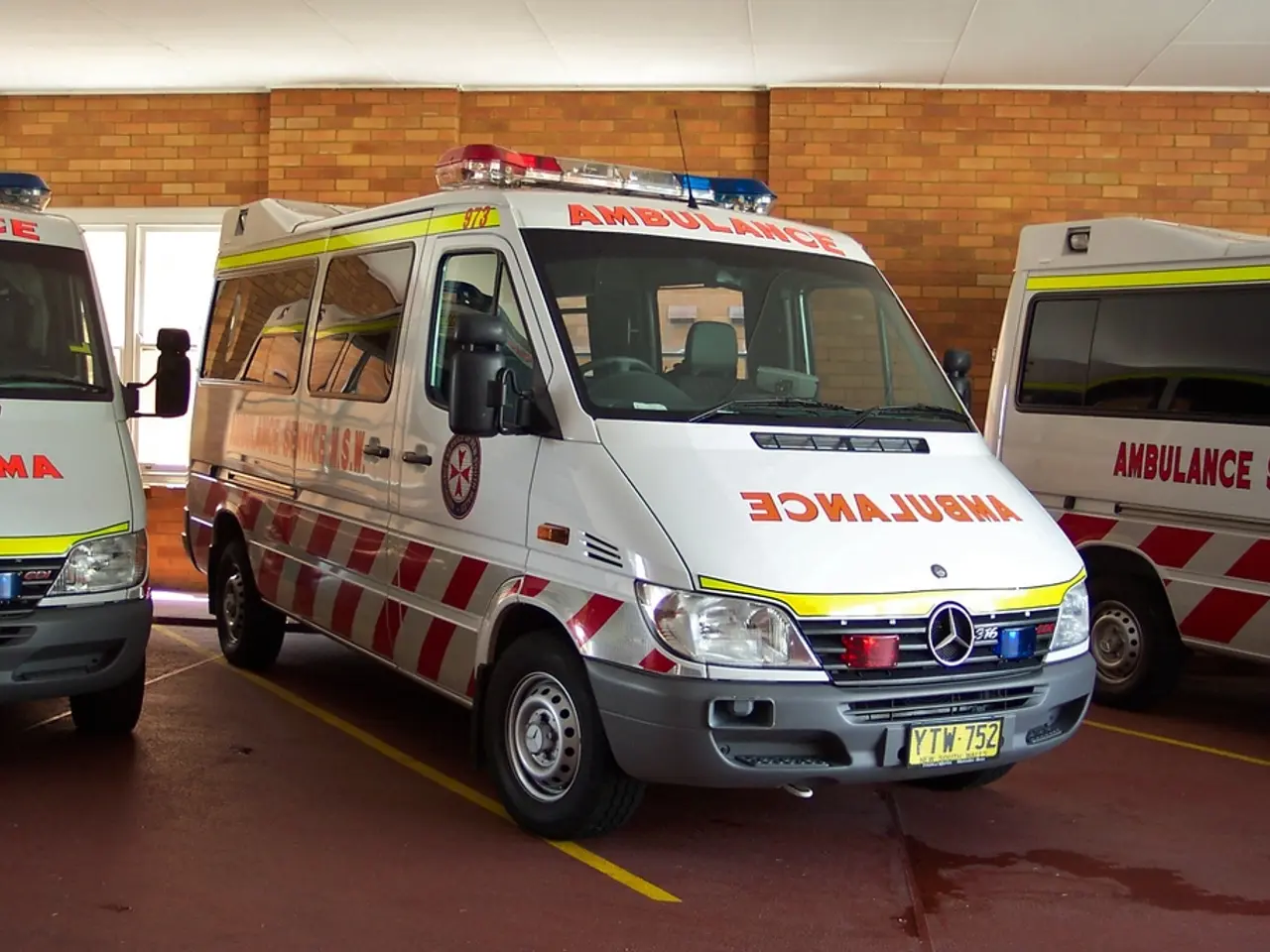Pulse Deficiencies: Root Causes and Remedies
Causes, Symptoms, and Treatment of Cardiogenic Shock and Cardiac Arrest
Cardiogenic Shock
Cardiogenic shock is a serious condition that occurs when the heart cannot pump sufficient blood around the body. This condition is most commonly caused by a severe heart attack, heart muscle disease, arrhythmias, mechanical disruptions, chronic heart failure, or restrictive cardiomyopathy with diastolic dysfunction [1][2][3][5].
Symptoms of cardiogenic shock include very low blood pressure (often systolic <90 mmHg), weak or rapid heart rate, cold and clammy/pale skin, weak pulse, rapid breathing or shortness of breath, decreased urine output (<30 mL/hour), confusion or decreased consciousness, and cool extremities. Sweating and loss of consciousness may also occur [1][2][4][5].
Initial treatment for cardiogenic shock aims to improve blood flow. For cardiogenic shock caused by a heart attack, opening blocked arteries through interventions like angioplasty may be essential. Medications like dobutamine and milrinone can improve heart contractility. Other treatments include dopamine and adrenaline in emergencies. When medications fail, mechanical circulatory support devices or heart transplantation may be necessary. Supportive care involves managing affected organs (e.g., dialysis for kidneys, mechanical ventilation for lungs) [1][2][5].
Cardiac Arrest
Cardiac arrest is a life-threatening emergency that occurs when the heart stops pumping blood around the body. It is primarily caused by sudden electrical disturbances in the heart that disrupt its pumping, often precipitated by heart attacks, severe heart disease, or trauma.
The immediate loss of consciousness, absence of breathing or abnormal breathing, no palpable pulse, and loss of responsiveness are key symptoms of cardiac arrest [general medical knowledge].
Immediate cardiopulmonary resuscitation (CPR) and defibrillation are critical to restore heart rhythm. Advanced emergency care includes airway management, medications, and addressing underlying causes [6].
Identifying a Weak Pulse
A weak pulse is typically rapid but faint or thready, difficult to feel, and may be irregular. It can indicate poor cardiac output and inadequate blood flow. To check for a pulse, use your fingers (not the thumb) to palpate common pulse points such as the radial artery (wrist) or carotid artery (neck), applying gentle pressure until you feel the pulse. In shock or cardiac arrest, the pulse may be absent or barely detectable, consistent with cold, clammy skin and other signs of poor perfusion [2][4].
Summary Table
| Condition | Causes | Symptoms | Treatment | |---------------------|-----------------------------------------|-----------------------------------|--------------------------------------| | Cardiogenic Shock | Heart attack, cardiomyopathy, arrhythmias, mechanical heart damage | Low BP, weak/rapid pulse, cold skin, low urine, confusion | Revascularization, inotropes (dobutamine), mechanical support, transplant | | Cardiac Arrest | Sudden arrhythmias, heart attack, trauma | Loss of consciousness, no pulse, no breathing | Immediate CPR, defibrillation, advanced cardiac life support |
This information synthesizes current medical understanding and treatment strategies for these conditions based on recent and authoritative sources [1][2][3][4][5].
[1] American Heart Association. (2021). Cardiogenic Shock. [Online] Available at: https://www.heart.org/en/health-topics/heart-attack/about-heart-attacks/complications/cardiogenic-shock
[2] Mayo Clinic. (2022). Cardiogenic Shock. [Online] Available at: https://www.mayoclinic.org/diseases-conditions/cardiogenic-shock/symptoms-causes/syc-20353536
[3] National Heart, Lung, and Blood Institute. (2022). Cardiogenic Shock. [Online] Available at: https://www.nhlbi.nih.gov/health-topics/cardiogenic-shock
[4] British Heart Foundation. (2022). Cardiogenic Shock. [Online] Available at: https://www.bhf.org.uk/informationsupport/heart-matters/cardiogenic-shock
[5] Cleveland Clinic. (2022). Cardiogenic Shock. [Online] Available at: https://my.clevelandclinic.org/health/diseases/17168-cardiogenic-shock
[6] American Heart Association. (2021). Cardiac Arrest. [Online] Available at: https://www.heart.org/en/health-topics/cardiac-arrest/about-cardiac-arrest/what-is-cardiac-arrest
- In the context of health-and-wellness discussions and promoting first aid and safety, it's crucial to be aware of the signs of cardiogenic shock and cardiac arrest, as timely intervention, such as doing CPR and using a defibrillator in cardiac arrest cases, can significantly increase the likelihood of survival.
- Understanding medical-conditions like cardiogenic shock and cardiac arrest requires a grasp of their causes, symptoms, and appropriate treatments. For instance, cardiogenic shock can be caused by heart attacks, while science has also made strides in improving cardiovascular-health through various treatment methods, such as using inotropes like dobutamine, mechanical support devices, or even transplantation.




